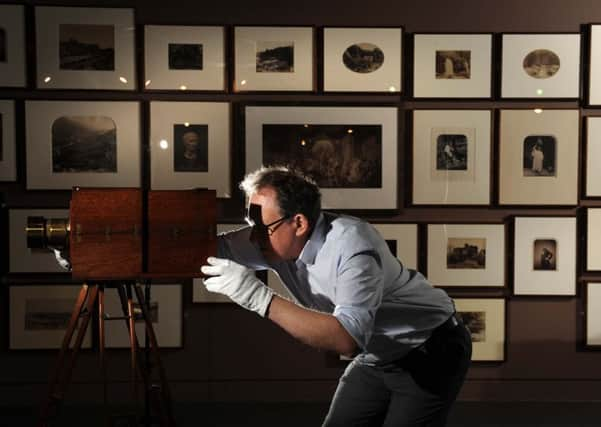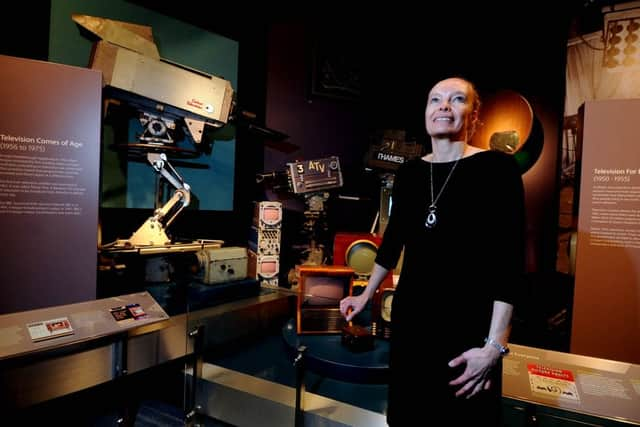Why IS Bradford's Media Museum allowing a major photographic archive to be moved to London?


June 16, 1983 was a landmark date in the history of Bradford.
With the city desperately trying to emerge from the shadow of industrial decline, it had set its sights on building a tourism industry on the foundations of the old mills which had once made it the woollen capital of the world. It was an ambitious plan given even the city’s cathedral was the least visited in the country, but it seemed to be working.
Advertisement
Hide AdAdvertisement
Hide AdMuch to the derision of some, Bradford had not only topped a list of best weekend-breaks, but it had also been chosen as the site for Britain’s new National Museum of Film, Photography and Television.


That June day, 300 dignitaries, including Lord Snowdon, attended the opening of the museum and among the crowds was a young Bradford photographer. Ian Beesley would go on to win numerous industry awards and some of his images would even end up within the museum’s collection. Later he also became a fully paid up member of the Royal Photographic Society, but it’s a membership he won’t be renewing.
“They won’t be getting any more of my money,” says Beesley, following the announcement 400,000 objects from the museum’s prestigious RPS Collection are to be shipped down the M1 to London’s V&A “It’s a decision which lacks complete integrity. It’s a huge loss to the region and another example of the Northern powerhouse becoming the Northern poorhouse.
“I still remember the day the museum opened. It was a wonderful. Hundreds of people from Bradford were stood outside. The city had finally been given something to be proud of and they wanted to be part of the celebrations. As a photographic resource it’s second to none. It’s well-used by students across the north and if they couldn’t make it work in Bradford I don’t see why it couldn’t have been moved to another northern gallery whether that be the Whitworth in Manchester of The Hepworth Wakefield. I can’t help but feel that once a museum starts shipping off its crown jewels, the end really is nigh.”
Advertisement
Hide AdAdvertisement
Hide AdBy absorbing the RPS archive, the V&A will be home to the largest collection of photography in the world. It’s a claim to fame which will help with the next lot of marketing material, but Simon Cooke, leader of Bradford Council’s Conservative Party, has echoed the views of many in an open letter to the V&A which describes the decision as “an appalling act of cultural vandalism”.


He acknowledges his words are unlikely to make any difference. The photographic treasure trove, which includes works by British photography pioneer William Henry Fox Talbot, the world’s first negative and about 8,000 cameras, are due to be in their new home by the summer, but questions about the future of the Bradford museum remain.
Rebranded as the National Media Museum 10 years ago, the attraction is part of the Science Museum Group, which also includes York’s National Railway Museum and the Museum of Science and Industry in Manchester. In 2013 the group’s director Ian Blatchford said that in the face of further funding cuts one of three may have to close and the smart money was on Bradford to lose out.
The worst never did happen, but those same concerns have now been revived by a statement put out by the RPS which said the National Media Museum has “suffered declining staff and funding cuts over recent years which has impacted on public access to the collection despite the very best efforts of the curatorial staff”.
Advertisement
Hide AdAdvertisement
Hide AdIn response, the museum yesterday went on the offensive. Its director Jo Quinton-Tulloch was keen to show off its new exhibition spaces and while admitting that “yes, funding is tight”, also pointed to the attraction’s rising visitor numbers which between April and January topped 374,000, an increase of 11 per cent year on year.
“People choose to tell stories in their own way,” says Quinton-Tulloch, commenting on the various reasons given for moving the RPS Collection. “The fact is that over the last 24 months we have had to rethink this museum’s strategy. We need to increase visitor numbers and we need to maximise funding. That is why he have decided to refocus on the science and technology.
“The National Media Museum’s photographic collection includes 3.5m different items. The RPS Collection is about art photography and we will still have an extensive photographic element to the museum. We still have the Kodak collection as well as the Daily Herald and Impressions Gallery archive and photography will remain an integral part of what we do here.”
The changes at the museum come just as Bradford appeared to be turning a corner. Towards the end of last year, the new Westfield shopping centre finally opened, filling the giant hole which had dominated the city centre for years and providing a sense of optimism for the future.
Advertisement
Hide AdAdvertisement
Hide AdQuinton-Tulloch insists that the museum will be part of the city’s bright, modern future, but it’s one which may look very different from the past. With the review of its collections ongoing, she won’t rule out other items from the museum being moved out and yesterday she also confirmed that the Bradford International Film Festival, which ran for 21 consecutive years, won’t now be returning.
The event, which in previous years had attracted the likes of Richard Attenborough, Ken Loach and John Hurt, was cancelled in 2015 while a review was completed. In its place the museum says it will be running two Widescreen Weekends, ‘celebrating the past, present and future of large screen formats’.
“We are still working on the details, but we hope the second one will be focused on gaming and animation,” says Quinton-Tulloch. “Next year the museum will also have a brand new hands-on attraction focusing on the themes of light, sound and perception and we are also looking at the possibility of a new treasures gallery to showcase our riches.
“The items going to the V&A are really focused on art photography and really this is about going back to what this museum was set up to do and that’s celebrate the science and technology.”
Advertisement
Hide AdAdvertisement
Hide AdThat’s not quite how the museum’s first director Colin Ford saw it. Back in 1983 when the national press arrived in Bradford, some determined to depict the city as a cultural backwater, he was very clear about the importance of Britain’s newest museum.
“The museum is unique in the way it traces the growth of photography as an art form alongside the technological developments which have influenced it,” said Ford, who had previously been Keeper of Film and Photography at the National Portrait Gallery. “We celebrate art through the person and the equipment which produces it.”
The loss of the RPS Collection could yet prove another defining moment in the history of the National Media Museum as it once again tries to find its focus.